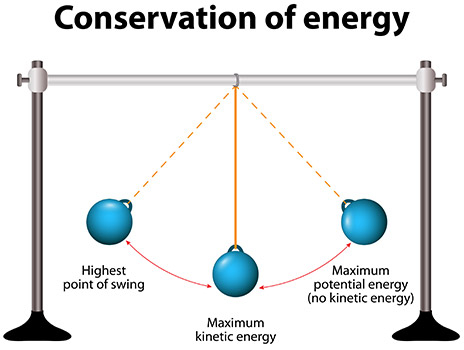Learn
Conservation
Think back to the roller coaster example in the introduction. Initially, the roller coaster is given a large amount of gravitational potential energy as it is pulled to the top of a very tall hill.
What happens to that potential energy as the roller coaster continues down the hill?

Basically, the energy the coaster has at the top of the hill changes back and forth from kinetic to potential throughout the ride but the total amount of energy remains constant (assuming no energy is lost to friction). This is the Law of Conservation of Energy.
Review the Energy in a Roller Coaster Ride interactive to see this relationship between potential and kinetic energy. PBS login information.
Law of Conservation of Energy
The Law of Conservation of Energy states that energy can be transferred or transformed but it cannot be created or destroyed. Energy can only be converted from one form to another or transferred from one place to another.
For example,
- Falling objects have gravitational potential energy before the fall, and kinetic energy during the fall.

Look at the swinging pendulum as another example. At the highest point of the swing, the pendulum has all potential energy. As it falls, that potential energy is transformed into kinetic energy (along the red arrows). At the bottom of the swing where the pendulum is moving the fastest, all the potential energy has been converted into kinetic energy.
Watch GPB: Segment H - Conservation of Energy (8:16).